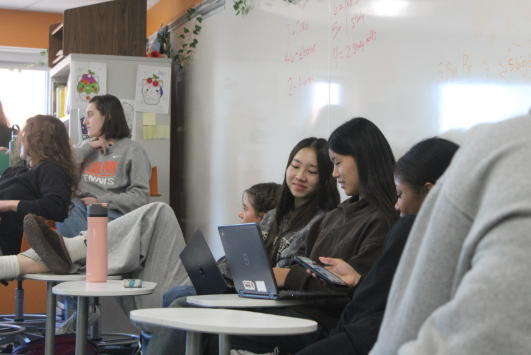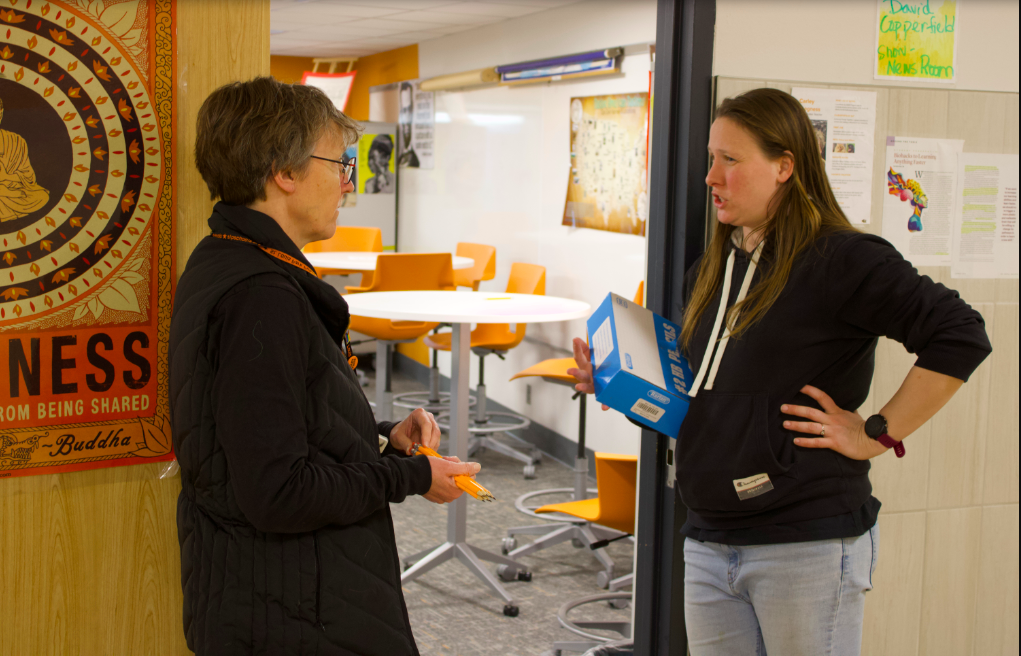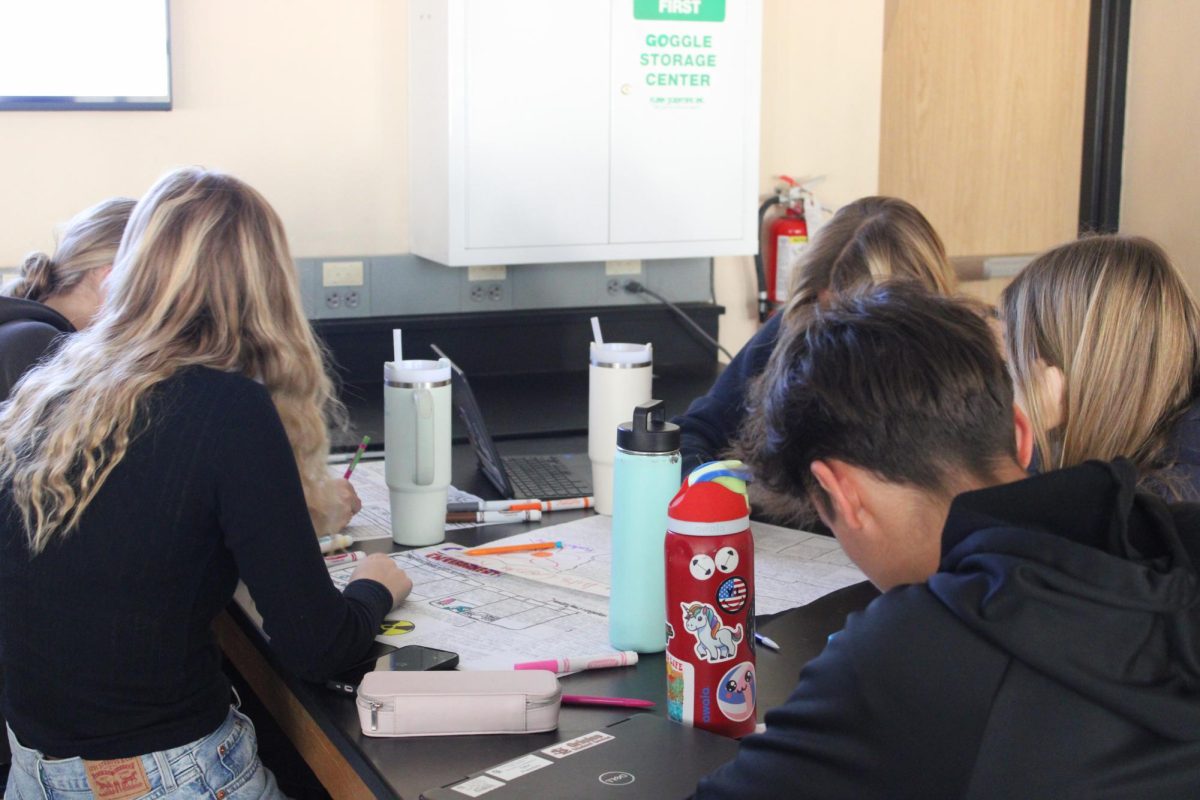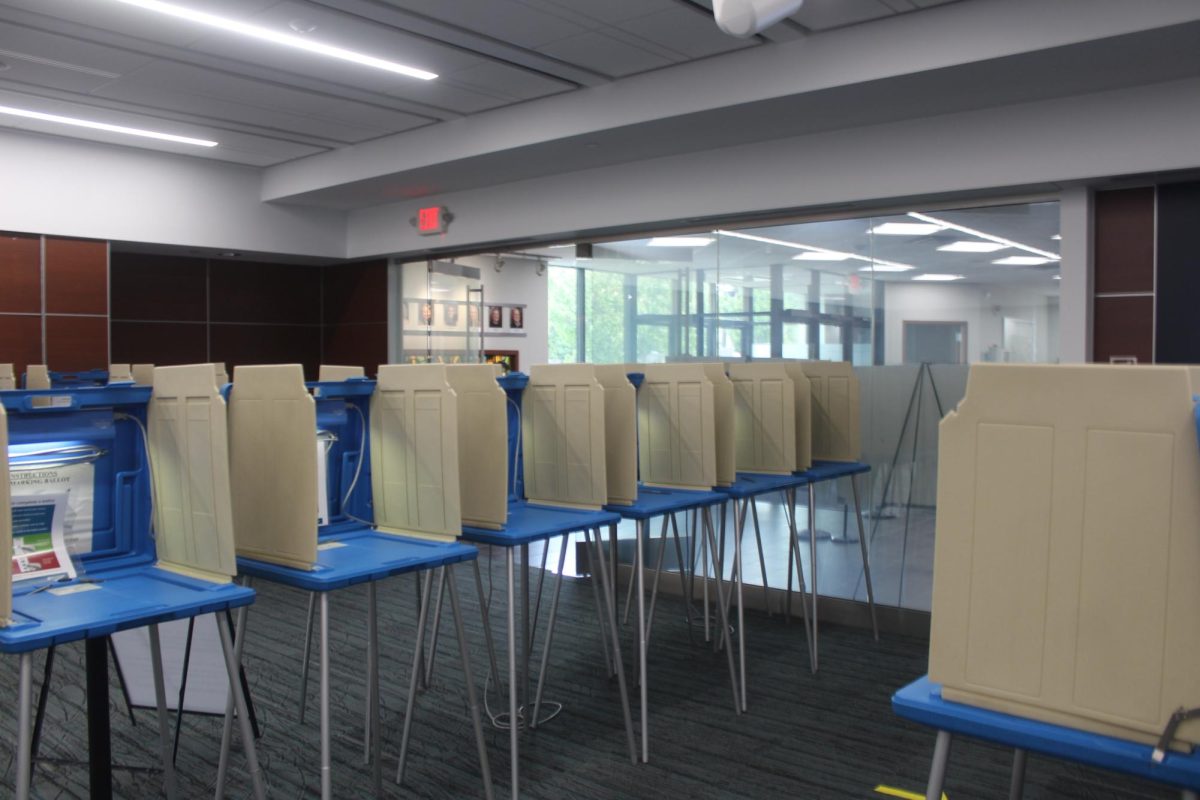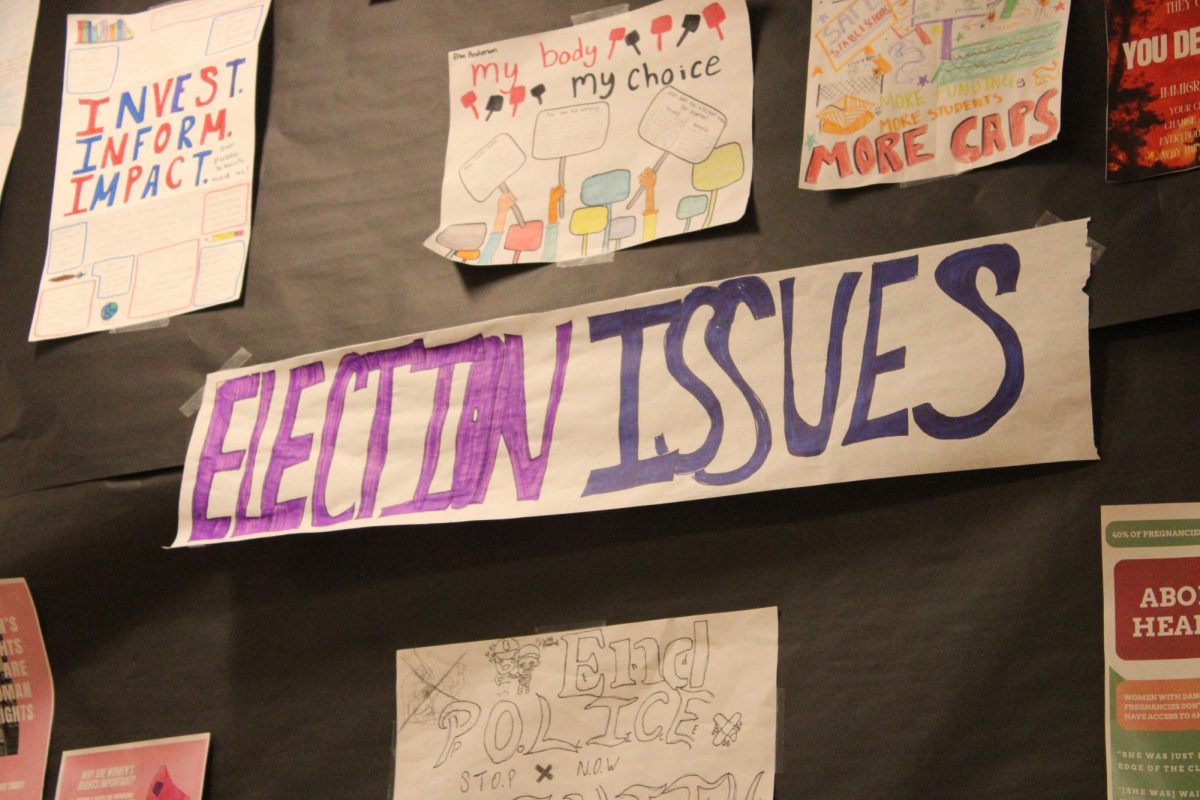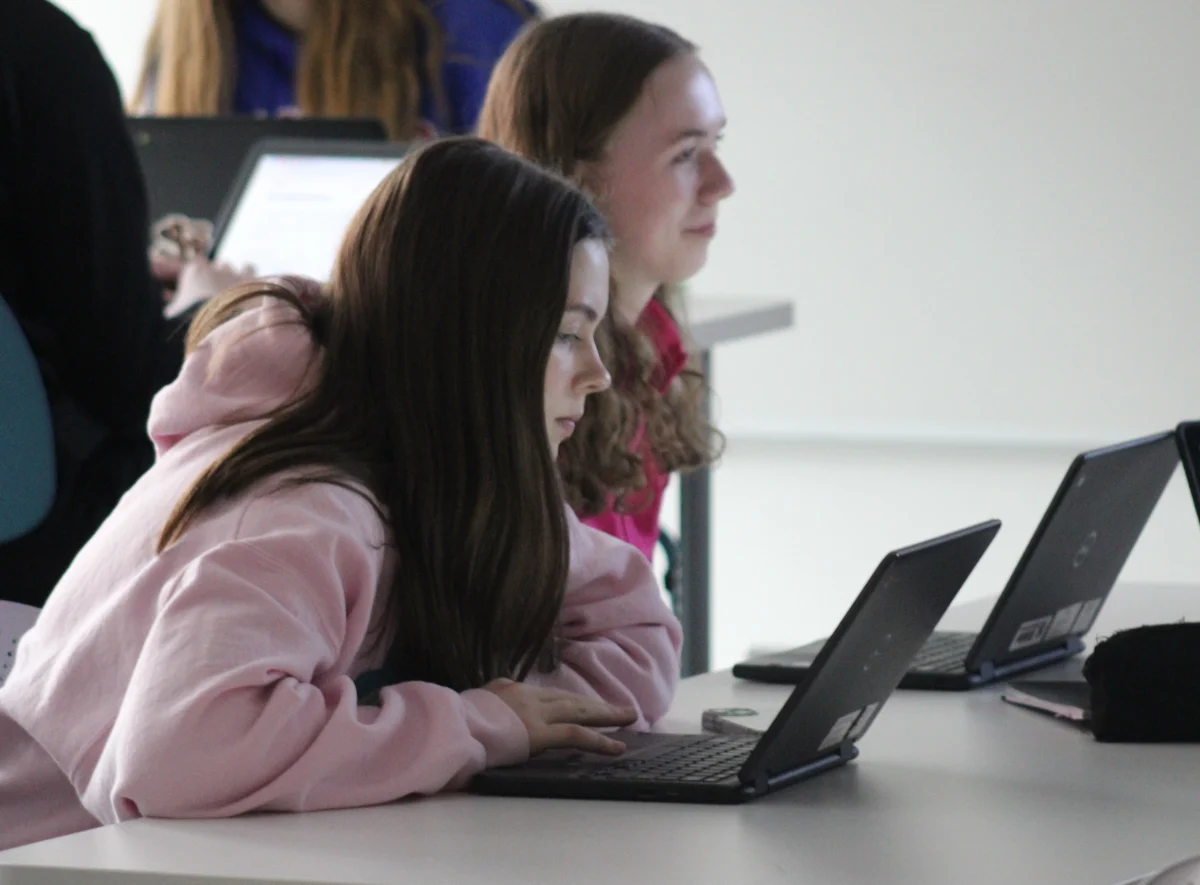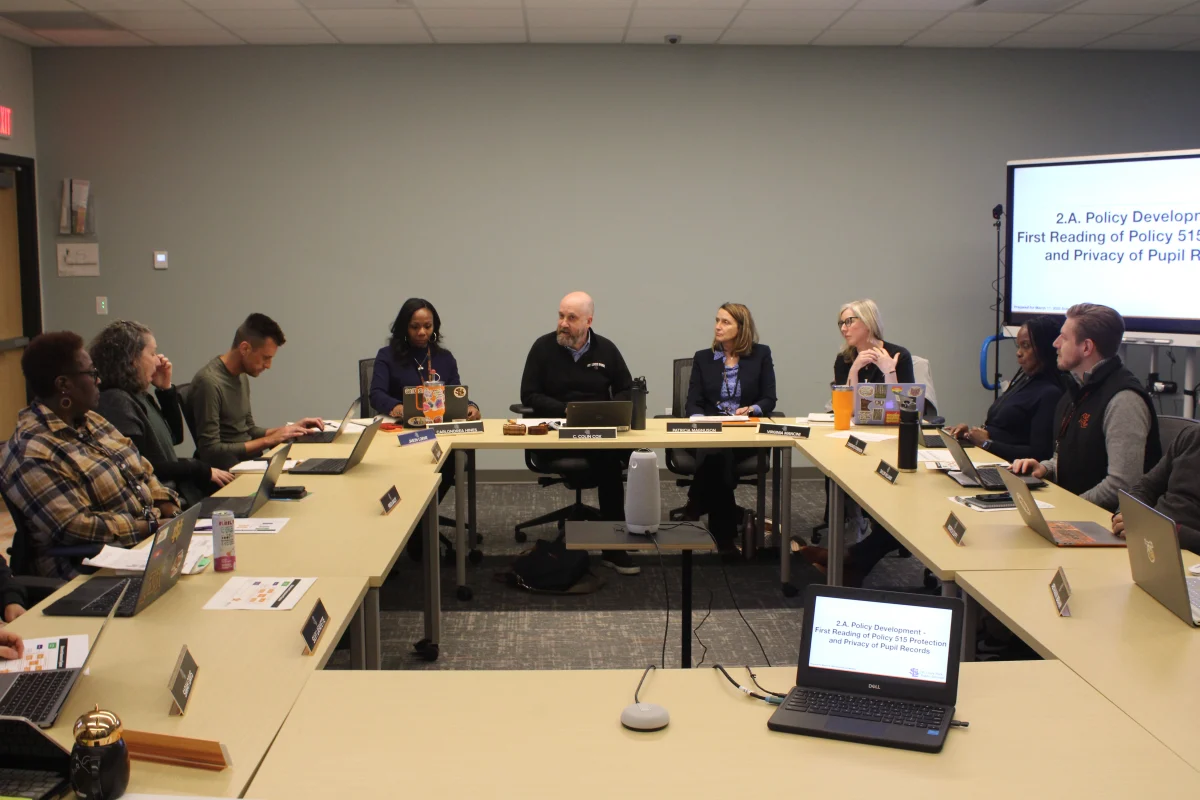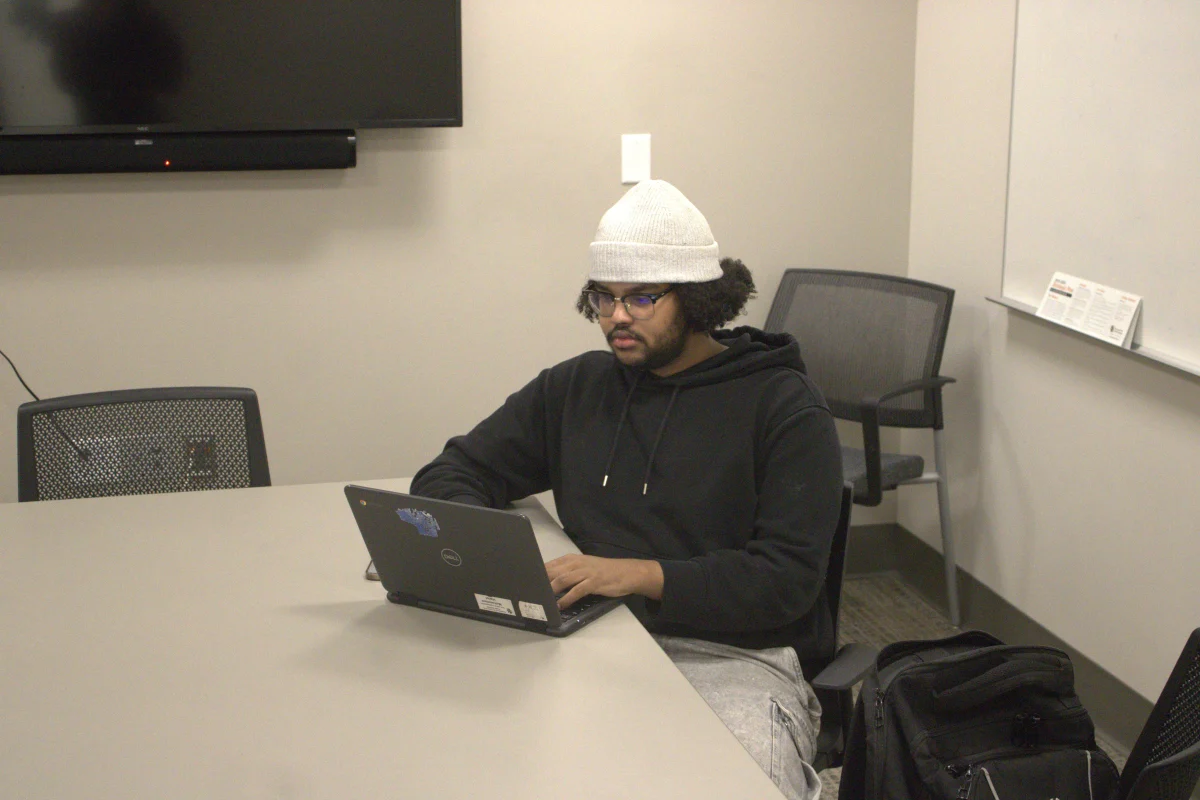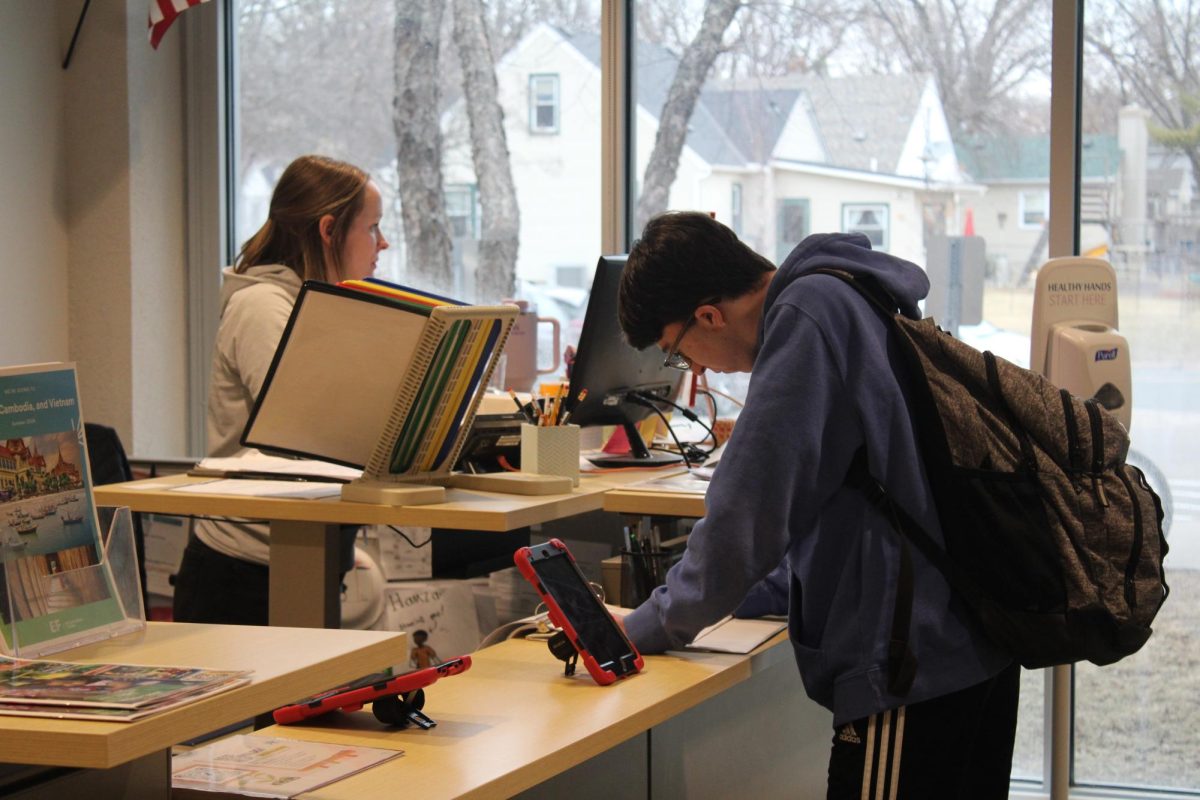A climate check in
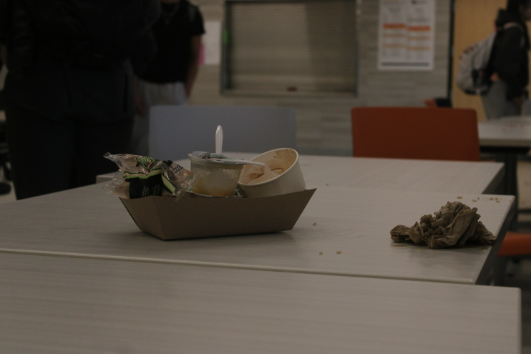
According to state representative Larry Kraft, Park students participated in iMatter, a climate program for high school leaders. He said those students were the root of St. Louis Park’s environmental plan, the Climate Action Plan. He said they initiated the idea, and because of them, St. Louis Park has one of the most vigorous climate plans in the state.
“A group of students at the high school got involved with iMatter, (a climate program for high school leaders) and just did a phenomenal job, and the St. Louis Park City Council was ready to listen to the students,” Kraft said. “Because of them, (the city) created this Climate Action Plan, which still is the most aggressive plan for a city in Minnesota.”
Senior Abi Oppegaard, Park’s Environmental Club president, said the city’s environmental policy was introduced by some of Park’s own. She said the plan helped the city progress further in its sustainability goals.
“The Climate Action Plan for St. Louis Park is really cool because it was actually presented to the city council by a group of students from St. Louis Park High School. It catalyzed the city to take a big step forward in addressing environmental issues,” Oppegaard said.
Despite the Climate Action Plan being proposed over seven years ago, the St. Louis Park sustainability manager, Emily Ziring, said Park youth continue to lead in the climate initiative. She said kids are better at engaging the community than adults.
“The youth in St. Louis Park have a really big voice. They’re on the cover of our Climate Action Plan,” Ziring said. “People listen to kids more than they’re going to listen to me or other bureaucrats.”
The city’s first foray into climate action was in 1984 when a free curbside recycling program was offered. In 1987, St Louis Park was recognized as the leading city in Hennepin County for its recycling success. AP Environmental Science teacher Al Wachutka said St. Louis Park was one of the first cities he saw to develop distinct city-wide recycling. He said it was a huge milestone and that the city is often environmentally conscious.
“Being that I grew up (in St. Louis Park), I’ve seen quite a bit. St. Louis Park was one of the first to initiate a citywide recycling program, which was really unique. To have that happen so early was big,” Wachutka said. “St. Louis Park as a community is always kind of ahead of the curve on sustainability efforts.”
Oppegaard said the city has fantastic environmentally conscious plans, such as Climate Champions. Climate Champions is a St. Louis Park program that can financially assist buildings and multi-family homes with energy-saving upgrades. She said many awards and programs in St. Louis Park assist residents in achieving a climate-conscious environment.
“The city is absolutely killing it in terms of environmental initiatives. We have this thing called Climate Champions, and there are different awards and programs for waste reduction, businesses and electrification rebates,” Oppegaard said. “All (of) these programs are meant to help city residents and move towards our goals in the Climate Action Plan.”
Park Environmental Club member Catherine Kotowski said she has developed a true passion for the environment and even some anxiety. She said the city has some good initiatives, but there is always room to improve.
“As I got older in middle school, I developed pretty bad climate anxiety, and now I just want to do everything I can to make sure that I don’t feel guilty in the future about not doing enough,” Kotowski said. “(Park is) getting there, but we still haven’t made enough growth yet. We just need to get more people to care, and we need to get the school to take more initiatives and put more effort into it.”
Ziring said St. Louis Park has developed many support programs to aid residents to be more environmentally conscious. She said the city provides financial aid to incentivize building owners towards a greener city.
“We offer a lot of technical assistance on improving home energy efficiency, switching to electric over natural gas and adopting renewables,” Ziring said. “We make it cheaper by offering city programs that can buy down the first cost.”
A common form of sustainability is the installation of Solar Panels. In 2022, the city was awarded the SolSmart gold designation for its work in solar energy advancement within the city. St. Louis Park made solar panels accessible and cost-friendly. Wachutka said although St. Louis Park is ahead of the curve, implementing solar panels throughout the city is an excellent way of trying new things in sustainability. He said it would also be a practical decision due to the excess space in the West End.
“Solar is one of the biggest things we could do because we have space. If we put solar panels all over every building in West End, we’d be doing great in renewable energy,” Wachutka said.
University of Minnesota Occupational and Environmental Epidemiologist Dr. Bruce Alexander said climate change is widely discussed in environmental health due to the various ways it affects the human population. Numerous studies worldwide provide factual evidence of our average surface temperature increase. He said by tackling climate change, we can solve other problems along the way.
“The big one you hear about all the time and it is quite pressing is climate change because that’s affecting us in many different ways,” Alexander said. “Whether it’s from extreme weather, drought affecting food supply, more frequent wildfires increasing air pollution or changing the landscape, climate change has a broad impact.”
Kraft said action from the individual level is helpful, but there is a more significant problem. He said for the climate to see a real change, there needs to be a change in habit and accessibility throughout St. Louis Park.
“Individual action is great. We should all do that, but we need systemic change for progress on climate change—we need the systems to make it easier to do the right thing,” Kraft said.
According to science teacher Daniel Ruzek, the most significant climate issue today is carbon emissions, and large industries are the root of the problem. He said other continents have created solutions and we are in a position to develop a solution and just need to take action.
“I still think (the biggest issue is) carbon emissions. A lot of the environmental movement has put the focus on individuals, but big industries—refineries and coal-burning facilities—are operating at a completely different magnitude. That’s what needs to be addressed first,” Ruzek said. “We need to drastically reduce fossil fuel consumption and increase dependence on renewables. Europe has figured it out. We’re in a great position to do it—we just need to do it.”
Wachutka said solar panels would benefit Park by allowing students to collect data from the panels. He said having access to solar technology would be a great way to utilize real-life examples and make observations outside of the classroom.
“It’d be way cool to have (solar panels), and if it were to go in, I would expect that there would be data available for my class to work with,” Wachutka said. “We could be using them as a classroom as an experimental thing. We could adjust the settings and take data and do stuff that doesn’t always happen (in a classroom).”
According to Kotowski, Park lacks a proper recycling system. In addition to recycling, she said one of her biggest complaints has been the food waste the school produces.
“We really need to work on reducing food waste in the cafeteria. I see so much food being thrown out in the garbage when it could be composted, and that’s really sad,” Kotowski said. “We do have recycling bins, but those don’t go to recycling—they just go straight into the dumpster. We could work on getting an actual recycling system in place.”
Ruzek said the food waste the lunchroom produces could be solved if students did a better job at cleaning up after themselves. He said while the solution may be especially costly due to the recent budget cuts, it would be beneficial to sort trash into specific categories.
“I’d love to see something with food waste and composting in the cafeteria. That would be a very easy thing to do,” Ruzek said. “We are very short-staffed on custodial workers, so just getting our trash picked up is a challenge. If we start sorting waste into different streams, that’s going to require more labor and money, which we’re tight on right now.”
Oppegaard said there have been some small steps the school has made that can add up. She said these steps are moving closer to environmentally friendly goals.
“Our school has made some changes, like switching to reusable lunch trays, which actually makes a huge impact. We are taking smaller steps, but we are still moving in the right direction,” Oppegard said.
Sophomore Avery Kuehl, a youth member of the Environment and Sustainability Board, said the weight of sustainability is on the youth. She said the current generation is more likely to be passionate and can make a change.
“(Environmental problems) really brings attention to future generations because obviously we’re younger, and I feel like we could maybe care more about the future than someone else who doesn’t have as much time does,” Kuehl said.
Oppegaard said education about environmentally conscious practices needs to be taught from a young age so these healthy practices are normalized. She said the change doesn’t just occur, as many students are unfamiliar with sustainable practices.
“For composting and recycling to work in high school, it must be instilled at a young age,” Oppegaard said. “It’s really hard to teach 14 to 18-year-olds new habits when they’ve never done it before.”
According to Alexander, the lack of seriousness surrounding climate change is a driving factor in the lack of environmental change. He said people often neglect to realize the importance of their efforts.
“Some people still don’t believe climate change is an issue, but when you’ve got ten ‘hundred-year floods’ in the last decade, that’s kind of a clue,” Alexander said. “People like to find someone else to blame, but individual actions—like reducing energy use and waste—matter too.”
According to Wachutka, the biggest problem is figuring out where to start. He said many options exist, but people must identify the solution that benefits St. Louis Park the most.
“You have to look at, is it water? Is it air? Is it land? Is it transportation? Is it waste? You just have to pick where we can make the greatest gains and focus on that,” Wachutka said.
Kuehl said people often believe that an individual change does not impact the environment. She said many people will ignore the problem altogether, and if people change their day-to-day habits, the environment might begin to see some changes.
“Most people are aware of (climate change), but they don’t know how much they can actually impact it,” Kuehl said. “They all just think it’s irrelevant, they ignore it, think it’s more of a global problem and that it’s not necessarily their problem. In reality, if everyone tried to make an impact, it would make a drastic change.”
Alexander said every small decision you make can make a difference. He said encouraging others to make an impact is better than doing nothing, and the first step to promote environmental change is through education.
“Everyday activities build up over time—reducing waste, composting, conserving energy and choosing to walk instead of drive can make a difference,” Alexander said. “Schools can implement composting programs, reduce energy consumption and encourage students to think about their environmental impact.”
Kotowski said there are plenty of partnerships with various environmental groups throughout the metro area. She said there are also some potential rallies that the Environmental Club will attend.
“There’s going to be a lot more collaboration with the Twin Cities environmental group for elders and more collaboration with other schools to get more done. There might also be some upcoming rallies that we’re going to be participating in,” Kotowski said.
According to Ziring, the majority of St. Louis Park’s gas emissions come from city buildings and transportation. She said a switch towards solar and electric vehicles would be a significant step towards lowering those numbers.
“97% of our greenhouse gas emissions are from buildings and transportation. The school district installing rooftop solar is great, but we need to see more property owners doing the same,” Ziring said. “If you must drive, shifting to electric vehicles is a good step—there are a lot of federal tax credits and incentives available.”
Kraft said Park’s school district has closely followed St. Louis Park’s environmental initiatives and even planned to use solar energy. He said it is crucial for Park to work with the city to achieve the environmental goals of St. Louis Park.
“The school district adopted a resolution with the same goals that the city has and had a plan to put solar on most buildings,” Kraft said. “The school district is one of the largest energy users in the city, so it’s really important to work together with the city.”
Ruzek said even if someone isn’t in the financial situation to make a large purchase, such as an electric car, there are small habits to implement into people’s lives. He said helping the environment can be making a choice as small as reducing, reusing and recycling.
“Not everyone can afford to buy an electric car. So we just have to focus on the small things that are within our control—reduce, reuse, recycle,” Ruzek said.
According to Kotowski, educating yourself is one of the first changes you can make to benefit the environment. She said to research and only support companies that follow your values.
“Educating yourself and knowing that every choice you make day to day impacts the environment—positively or negatively—is super important,” Kotowski said. “Do your research about everything. When you’re buying things, put your money where your mind is and support companies that do good work.”
Oppegaard said there are plenty of ways individuals can make a difference. She said perfection is not required to create environmental change.
“Buying things second-hand is an easy way to make a difference,” Oppegaard said. “Carpool more, drive less and try to eat more plant-based meals. You don’t have to be perfect—small changes add up.”






